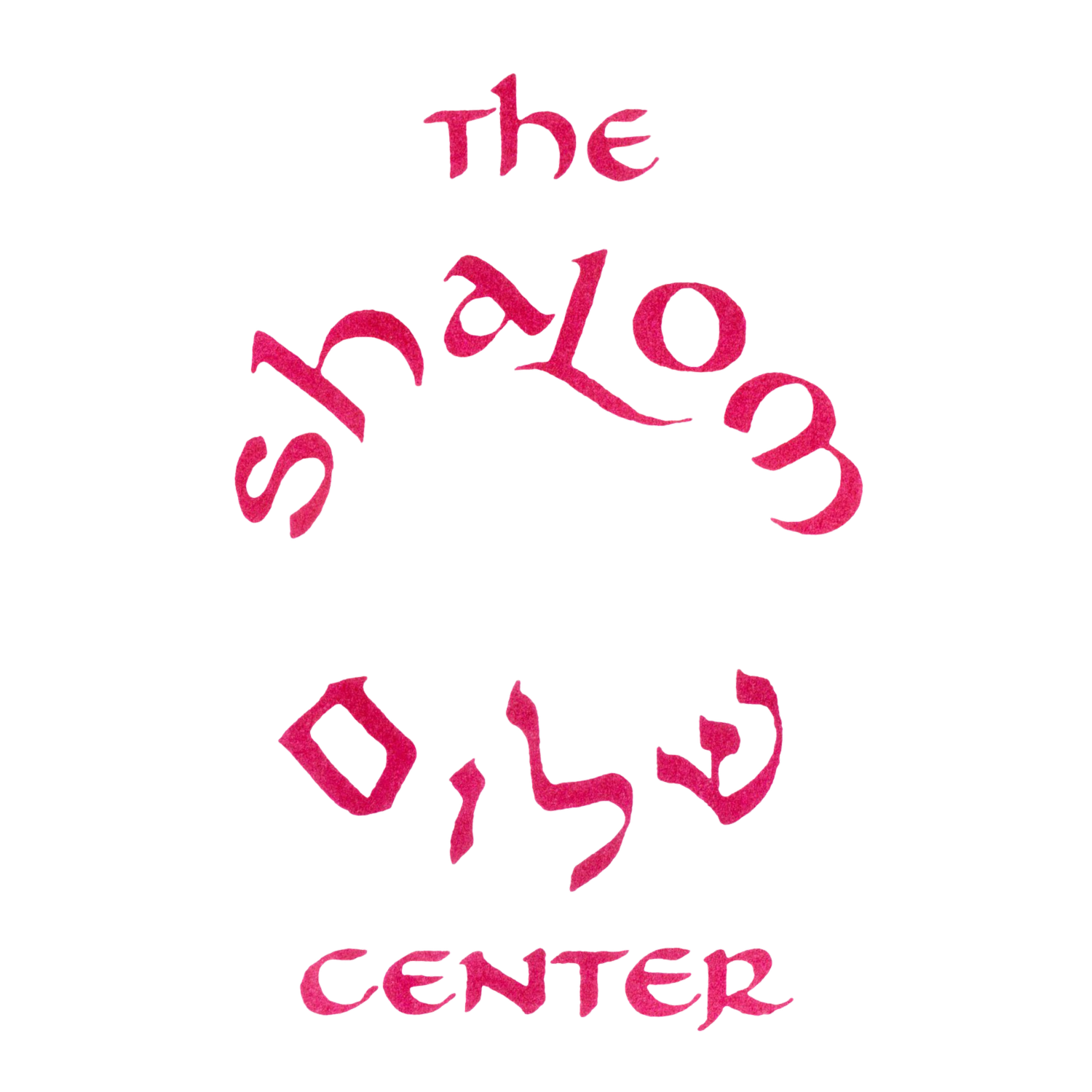This Coming Yom Kippur: The Necessary Day of People-wide Jewish Teshuva
by Rabbi Arthur Waskow
For years at the Elat Chayyim Jewish-renewal retreat center and for decades since, Rabbi Phyllis Berman and I have introduced a very relevant but unconventional Torah reading to the Yom Kippur service.
We have added the reading in Genesis 25: 7-11 in which Isaac and Ishmael, for the first and only time in Torah, are described as “Abraham’s sons.” The story emphasizes how they came together to bury their dangerous father.
ְוְיׇקְשָׁ֣ן יָלַ֔ד אֶת־שְׁבָ֖א וְאֶת־דְּדָ֑ן וּבְנֵ֣י דְדָ֔ן
וּבְנֵ֣י מִדְיָ֗ן עֵיפָ֤ה וָעֵ֙פֶר֙ וַחֲנֹ֔ךְ וַאֲבִידָ֖ע
וְלִבְנֵ֤י הַפִּֽילַגְשִׁים֙ אֲשֶׁ֣ר לְאַבְרָהָ֔ם נָתַ֥ן
וְאֵ֗לֶּה יְמֵ֛י שְׁנֵֽי־חַיֵּ֥י אַבְרָהָ֖ם אֲשֶׁר־חָ֑י מְאַ֥ת
שָׁנָ֛ה וְשִׁבְעִ֥ים שָׁנָ֖ה וְחָמֵ֥שׁ שָׁנִֽים׃
This was the total span of Abraham’s life: one hundred and seventy-five years.
וַיִּגְוַ֨ע וַיָּ֧מׇת אַבְרָהָ֛ם בְּשֵׂיבָ֥ה טוֹבָ֖ה זָקֵ֣ן
וְשָׂבֵ֑עַ וַיֵּאָ֖סֶף אֶל־עַמָּֽיו׃
And Abraham breathed his last, dying at a good ripe age, old and contented; and he was gathered to his kin.
וַיִּקְבְּר֨וּ אֹת֜וֹ יִצְחָ֤ק וְיִשְׁמָעֵאל֙ בָּנָ֔יו אֶל־
מְעָרַ֖ת הַמַּכְפֵּלָ֑ה אֶל־שְׂדֵ֞ה עֶפְרֹ֤ן בֶּן־צֹ֙חַר֙
הַֽחִתִּ֔י אֲשֶׁ֖ר עַל־פְּנֵ֥י מַמְרֵֽא׃
His sons Isaac and Ishmael buried him in the cave of Machpelah, in the field of Ephron son of Zohar the Hittite, facing Mamre,
הַשָּׂדֶ֛ה אֲשֶׁר־קָנָ֥ה אַבְרָהָ֖ם מֵאֵ֣ת בְּנֵי־חֵ֑ת
שָׁ֛מָּה קֻבַּ֥ר אַבְרָהָ֖ם וְשָׂרָ֥ה אִשְׁתּֽוֹ׃
the field that Abraham had bought from the Hittites; there Abraham was buried, and Sarah his wife.
וַיְהִ֗י אַחֲרֵי֙ מ֣וֹת אַבְרָהָ֔ם וַיְבָ֥רֶךְ אֱלֹהִ֖ים
אֶת־יִצְחָ֣ק בְּנ֑וֹ וַיֵּ֣שֶׁב יִצְחָ֔ק עִם־בְּאֵ֥ר לַחַ֖י
רֹאִֽי׃ {פ}
After the death of Abraham, God blessed his son Isaac. And Isaac settled at Beer-lahai-roi, the Well of the Living One Who Sees Me.
We can only imagine, and do midrash to describe, what they said after years of separation from each other and from the father who took the risk of almost killing them.
We felt that this would be a necessary conclusion to the stories that Jews traditionally read on the two days of Rosh Hashanah: the story in which Abraham expels Hagar and Ishmael into the wilderness, where they almost died for lack of water, and the story in which Abraham takes Isaac up a mountain, ready to kill him as a sacred offering.
These two stories demand teshuvah–turning ourselves in a new direction, of love not death. And the story of the resolution is the same Torah but in traditional Judaism, it has never been marked to equal the attention and the passion of the Rosh Hashanah stories. That would come if we read the story on Yom Kippur, where it would stand on the mount as high as Rosh Hashanah.
The passage in Genesis 25 goes further. After the two sons bury their father, Isaac goes to live at the well-spring that has been the life saving water for Hagar and Ishmael for decades.
In Genesis 25, Ishmael and Isaac are reconciled and live together. Their well is Be’er Lachai Roi, the Well of the Living One Who Sees Me. That is what Hagar names the well when her eyes are opened by her own tears and she sees the Gd who sees her.
Now if ever in Jewish history we need to take responsibility and turn ourselves toward the living Gd who sees us. The State that most of the Jewish people sent love and money to establish has killed tens of thousands of our cousins, the children of our Forebear Abraham’s and Hagar’s blessing.
So we urgently recommend that we make the central Torah reading for the day of repentance that passage as not just an ancient story, an ancient memory, but as the shofar blast to waken us to our responsibility today. The passage is short and profound: (Genesis 25)
Many of you, my companions and readers in this continuing struggle for peace and justice in America and with our planet, and many of us have felt the same passion, even at a distance, with all those who live in the tiny sliver of land that colors so many of our stories and our symbols.
During these past months, we have tried to work past the bloody massacres of October 7th, and October 8th, and November 8th, and December 8th, and until yesterday, and until tomorrow, and who knows how much longer. I am writing now to urge that as many of us as possible make Yom Kippur, this very next Yom Kippur, a day of grief-expressed, responsibility-taken, and love-affirmed.
There are several paths we could take as responsible Jews who know that “repentance” is not just emotional, but requires loving deeds to change the framework of protecting the identity of Yisrael, the Godwrestling folk.
Two of those paths focus on changing the behavior and the ruling regime of Israel, either through changing US policy toward them or by direct relations with Jews and Palestinians in the land. A third is to focus on growing a New Diaspora Judaism where we are.
The Shalom Center has just published as prophetic vision the harrowing story of a lifelong Israeli soldier and university professor. He has for decades been a scholarly researcher/writer about genocide in several places and the way in which some leaders of some nations prepare their people to undertake a genocide.
He warns us: the future is teshuvah or death. Death of our cousins, death of our dream of what a Jewish state could be, death of generations of Israelis. In addition to the passage that calls us all to drink from the well of the Living One who sees us all, we will be publishing some suggestion for ways of transforming ourselves.
We must speak lovingly and firmly with our government, with our partners in other communities of spiritual exploration, with our families, friends, companions. We must listen to the Messenger who made sure that Hagar and Ishmael saw the water that they needed; We must make sure to listen to the Messenger who said, “Do not lay murderous hands upon your child!”

